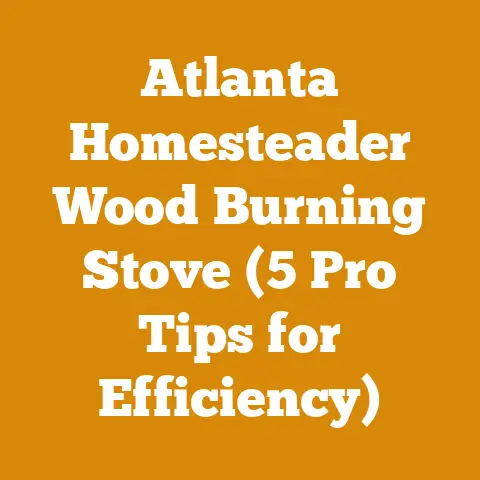Fireplace Rug Guide (5 Pro Tips for Wood Stove Owners)
In the cozy embrace of our family room, the fireplace has always been more than just a source of heat; it’s the heart of our home. I remember countless evenings spent gathered around the crackling fire, sharing stories, laughter, and the simple joy of being together. But with all those cherished moments came a challenge: protecting our floors from the embers and ash that inevitably escaped the hearth.
If you’re a wood stove owner like me, you know the importance of having a reliable and effective way to protect your floors. Whether you’re dealing with flying sparks, hot embers, or just the general mess that comes with burning wood, a good fireplace rug is essential. But with so many options available, it can be overwhelming to choose the right one.
In this article, I’ll walk you through everything you need to know to select the perfect fireplace rug for your needs. I’ll share my top five pro tips, based on years of personal experience, and provide detailed information on materials, sizes, safety considerations, and more. By the end of this guide, you’ll be well-equipped to make an informed decision and create a safer, more beautiful hearth area for your family to enjoy.
Key Takeaways:
- Material Matters: Choose a rug made from fire-resistant materials like wool, fiberglass, or specific synthetic blends to protect against sparks and embers.
- Size is Crucial: Ensure your rug extends far enough from the fireplace to catch any stray embers or ash, typically at least 16-20 inches in front and 8 inches on the sides.
- Safety First: Look for rugs with a non-slip backing to prevent accidents and ensure they meet relevant safety standards.
- Style and Function: Balance aesthetic appeal with practical considerations to find a rug that complements your décor while providing adequate protection.
- Maintenance is Key: Regularly clean your rug to remove ash, soot, and debris, and consider professional cleaning for deep stains or damage.
Now, let’s dive into the details and explore the world of fireplace rugs!
The Importance of a Fireplace Rug: Protecting Your Home and Family
Before we get into the nitty-gritty of choosing the right rug, let’s take a moment to understand why it’s such an essential accessory for any wood stove owner.
Preventing Fire Hazards
The primary function of a fireplace rug is to protect your floors from fire hazards. Wood-burning stoves, while cozy and efficient, can be unpredictable. Sparks, embers, and even small pieces of burning wood can escape the firebox and land on your flooring. According to the National Fire Protection Association (NFPA), heating equipment is a leading cause of home fires in the United States. In fact, between 2014 and 2018, heating equipment was involved in an estimated 48,530 home fires per year, resulting in 500 deaths, 1,350 injuries, and $1.1 billion in property damage.
A fire-resistant rug acts as a barrier, preventing these stray embers from igniting carpets, hardwood floors, or other flammable materials. It provides a crucial layer of protection, giving you peace of mind and reducing the risk of a potentially devastating fire.
Protecting Your Flooring
Even if a stray ember doesn’t start a fire, it can still cause significant damage to your flooring. Hot embers can scorch, melt, or discolor carpets and hardwood floors, leaving unsightly marks that are difficult and expensive to repair.
I remember one particularly chilly winter evening when a small ember popped out of our fireplace and landed unnoticed on our hardwood floor. By the time I discovered it, it had already left a small but noticeable burn mark. While it wasn’t a major disaster, it was a frustrating reminder of the importance of having adequate protection.
A good fireplace rug can prevent these types of accidents, preserving the beauty and integrity of your flooring for years to come.
Improving Safety
In addition to preventing fire hazards and protecting your flooring, a fireplace rug can also improve overall safety in your home. Many rugs come with a non-slip backing, which helps to prevent slips and falls, especially in areas with heavy foot traffic.
This is particularly important if you have young children or elderly family members living in your home. A non-slip rug can provide added stability and reduce the risk of accidents, especially around the fireplace area.
Enhancing Aesthetics
Finally, a fireplace rug can also enhance the overall aesthetics of your hearth area. With so many styles, colors, and patterns available, you can easily find a rug that complements your décor and adds a touch of elegance to your living space.
I’ve always believed that the fireplace is the focal point of our family room, and the right rug can help to accentuate its beauty and create a warm, inviting atmosphere.
Not all materials are created equal, and some are far more fire-resistant than others. Choosing the right material can make all the difference in protecting your home and family.
Wool: The Natural Choice
Wool is a natural fiber that has been used for centuries in fire-resistant applications. It’s naturally flame-retardant, meaning it’s difficult to ignite and will self-extinguish if exposed to a flame.
According to the American Wool Council, wool is composed of protein that is naturally high in nitrogen and water, which makes it inherently fire-resistant. Wool also has a high ignition temperature, meaning it takes a lot of heat to get it to catch fire.
In addition to its fire-resistant properties, wool is also durable, comfortable, and naturally stain-resistant. It’s a great choice for high-traffic areas and can withstand years of use with proper care.
I’ve personally used wool rugs in front of our fireplace for many years and have been consistently impressed with their performance. They’ve held up well to daily wear and tear and have provided excellent protection against sparks and embers.
Pros of Wool:
- Naturally flame-retardant
- Durable and long-lasting
- Comfortable and soft
- Stain-resistant
- Environmentally friendly
Cons of Wool:
- Can be more expensive than synthetic options
- May require professional cleaning
Fiberglass: The Industrial Option
Fiberglass is a synthetic material that is commonly used in industrial applications due to its excellent fire-resistant properties. It’s non-combustible, meaning it won’t burn, and it can withstand extremely high temperatures without melting or degrading.
Fiberglass rugs are often used in commercial settings, such as restaurants and hotels, where fire safety is a top priority. They’re also a good option for homeowners who want the ultimate in fire protection.
Pros of Fiberglass:
- Excellent fire resistance
- Non-combustible
- Durable and long-lasting
- Relatively inexpensive
Cons of Fiberglass:
- Can be uncomfortable to the touch
- May not be aesthetically pleasing for some homeowners
- Can release fibers if damaged
Synthetic Blends: Balancing Cost and Performance
In addition to wool and fiberglass, there are also a variety of synthetic blends that offer good fire resistance at a more affordable price point. These blends typically combine synthetic fibers like nylon or polypropylene with fire-retardant chemicals to create a rug that is both durable and safe.
When choosing a synthetic blend, it’s important to look for rugs that have been treated with a fire-retardant finish and that meet relevant safety standards. Look for labels that indicate the rug has been tested and certified by organizations like the Consumer Product Safety Commission (CPSC).
Pros of Synthetic Blends:
- More affordable than wool
- Good fire resistance
- Durable and long-lasting
- Available in a wide variety of styles and colors
Cons of Synthetic Blends:
- May not be as comfortable as wool
- Fire resistance may diminish over time
- May contain chemicals that can be harmful to the environment
Materials to Avoid
While some materials are excellent choices for fireplace rugs, others should be avoided altogether. Highly flammable materials like cotton, rayon, and silk should never be used in front of a fireplace, as they can easily ignite and spread fire.
It’s also important to avoid rugs with loose fibers or shaggy textures, as these can easily catch sparks and embers. Opt for rugs with a tight weave and a low pile height to minimize the risk of fire.
Pro Tip 2: Size is Crucial: Ensuring Adequate Coverage
Once you’ve chosen the right material for your fireplace rug, the next step is to determine the appropriate size. A rug that is too small won’t provide adequate protection, while a rug that is too large can be cumbersome and unsightly.
Measuring Your Hearth Area
The first step in determining the right size rug is to measure your hearth area. Use a tape measure to determine the width and depth of your fireplace opening, as well as the distance from the fireplace to any nearby furniture or flammable materials.
It’s important to consider not only the size of the fireplace itself but also the surrounding area. Sparks and embers can travel a surprising distance, so it’s essential to provide adequate coverage to protect your floors and furniture.
Recommended Rug Dimensions
As a general rule, your fireplace rug should extend at least 16-20 inches in front of the fireplace opening and at least 8 inches on either side. This will provide sufficient coverage to catch any stray embers or ash that may escape the firebox.
If you have a particularly large fireplace or if you tend to burn a lot of wood, you may want to consider a larger rug to provide even more protection.
Example:
Let’s say your fireplace opening is 36 inches wide and 24 inches deep. In this case, you would want a rug that is at least 52-56 inches wide (36 inches + 8 inches on each side) and 40-44 inches deep (24 inches + 16-20 inches in front).
Considering the Room Layout
In addition to the size of your fireplace, you should also consider the layout of your room when choosing a rug size. Make sure the rug doesn’t obstruct doorways or create a tripping hazard.
If you have a small room, you may want to opt for a smaller rug to avoid overwhelming the space. Conversely, if you have a large room, you may want to choose a larger rug to create a more balanced and cohesive look.
Custom Sizing Options
If you’re having trouble finding a rug that fits your specific needs, you may want to consider custom sizing options. Many rug manufacturers offer custom sizing services, allowing you to create a rug that is perfectly tailored to your hearth area.
While custom sizing can be more expensive than buying a standard-sized rug, it can be a worthwhile investment if you have unique requirements or if you want to ensure a perfect fit.
Pro Tip 3: Safety First: Ensuring Non-Slip Backing and Compliance
Safety should always be a top priority when choosing a fireplace rug. In addition to fire resistance, it’s also important to consider factors like non-slip backing and compliance with safety standards.
Non-Slip Backing: Preventing Accidents
A non-slip backing is essential for preventing accidents around the fireplace. A rug that slides or shifts can create a tripping hazard, especially for young children or elderly family members.
Look for rugs that have a rubber or latex backing, as these materials provide excellent grip and prevent the rug from sliding on hard surfaces. Avoid rugs with a smooth or slick backing, as these can be particularly dangerous.
I’ve personally witnessed several near-misses involving slippery rugs, which is why I always make sure to choose rugs with a reliable non-slip backing.
Compliance with Safety Standards
When choosing a fireplace rug, it’s important to ensure that it meets relevant safety standards. Look for rugs that have been tested and certified by organizations like the Consumer Product Safety Commission (CPSC) or the American Society for Testing and Materials (ASTM).
These certifications indicate that the rug has been tested for fire resistance, slip resistance, and other safety factors, giving you peace of mind and ensuring that you’re buying a product that meets industry standards.
Checking for Harmful Chemicals
In addition to fire resistance and slip resistance, it’s also important to check for harmful chemicals when choosing a fireplace rug. Some rugs may contain chemicals like formaldehyde or volatile organic compounds (VOCs), which can be harmful to your health.
Look for rugs that have been certified by organizations like Oeko-Tex, which ensures that the rug has been tested for harmful substances and meets strict environmental standards.
Regular Inspections
Even if you choose a rug that meets all the relevant safety standards, it’s important to inspect it regularly for signs of wear and tear. Check for loose fibers, frayed edges, or damage to the backing, and replace the rug if necessary.
A damaged rug can be a safety hazard, so it’s important to address any issues promptly to prevent accidents.
Pro Tip 4: Style and Function: Balancing Aesthetics with Practicality
While safety and functionality are paramount, it’s also important to choose a fireplace rug that complements your décor and enhances the overall aesthetics of your living space.
Choosing a Style that Complements Your Décor
Fireplace rugs come in a wide variety of styles, colors, and patterns, so you can easily find one that matches your personal taste and complements your existing décor.
If you have a traditional-style home, you may want to opt for a rug with a classic pattern or a rich, warm color palette. If you have a more modern home, you may prefer a rug with a minimalist design or a bold, geometric pattern.
I’ve always believed that the fireplace is the focal point of our family room, and the right rug can help to accentuate its beauty and create a cohesive look.
Considering Color and Pattern
When choosing a color and pattern for your fireplace rug, it’s important to consider the overall color scheme of your room. You may want to choose a rug that complements the colors of your walls, furniture, and other accessories.
Alternatively, you may want to choose a rug that provides a pop of color or a contrasting pattern to add visual interest to your space.
Balancing Aesthetics with Practicality
While it’s important to choose a rug that looks good, it’s also important to consider practical factors like durability and ease of maintenance.
Opt for rugs that are made from durable materials and that are easy to clean. Avoid rugs with delicate patterns or intricate designs, as these can be difficult to maintain and may show dirt and stains more easily.
Layering Rugs
If you want to add extra style and comfort to your hearth area, you may want to consider layering rugs. Layering a smaller, more decorative rug on top of a larger, more functional rug can create a cozy and inviting atmosphere.
Just make sure that the top rug is securely anchored to prevent it from sliding or shifting.
Pro Tip 5: Maintenance is Key: Cleaning and Caring for Your Rug
Once you’ve chosen the perfect fireplace rug, it’s important to maintain it properly to ensure its longevity and effectiveness. Regular cleaning and care can help to prevent damage, extend the life of your rug, and keep your hearth area looking its best.
Regular Vacuuming
The most important thing you can do to maintain your fireplace rug is to vacuum it regularly. Vacuuming helps to remove ash, soot, and debris that can accumulate on the rug over time.
I recommend vacuuming your fireplace rug at least once a week, or more often if you use your fireplace frequently. Use a vacuum cleaner with a brush attachment to loosen dirt and debris, and be sure to vacuum both sides of the rug.
Spot Cleaning
In addition to regular vacuuming, it’s also important to spot clean your fireplace rug as needed. Spills, stains, and other messes should be cleaned up promptly to prevent them from setting in and becoming permanent.
Use a mild detergent and a soft cloth to blot the stain, working from the outside in. Avoid rubbing the stain, as this can spread it and make it more difficult to remove.
Professional Cleaning
For deep stains or damage, you may want to consider professional cleaning. Professional rug cleaners have the expertise and equipment to safely and effectively clean your fireplace rug, removing even the most stubborn stains and restoring its original beauty.
I recommend having your fireplace rug professionally cleaned at least once a year, or more often if it’s heavily used.
Preventative Measures
In addition to cleaning your fireplace rug regularly, there are also several preventative measures you can take to protect it from damage.
Fireplace Screens: A Necessary Barrier
A fireplace screen is an essential accessory for any wood-burning fireplace. It acts as a physical barrier, preventing sparks and embers from escaping the firebox and landing on your flooring or furniture.
Choose a screen that is made from sturdy materials like steel or iron and that fits snugly against the fireplace opening. Make sure the screen has a fine mesh to prevent even the smallest sparks from getting through.
Hearth Pads: Extended Protection
In addition to a fireplace rug, you may also want to consider using a hearth pad. Hearth pads are typically made from non-combustible materials like cement board or metal and are designed to provide additional protection to your flooring.
Hearth pads are particularly useful for wood stoves or fireplaces that are raised off the ground, as they can help to prevent heat from transferring to the floor below.
Smoke Detectors and Carbon Monoxide Detectors
Smoke detectors and carbon monoxide detectors are essential safety devices for any home, but they are particularly important for homes with wood-burning fireplaces.
Smoke detectors can alert you to the presence of smoke, giving you time to evacuate your home in the event of a fire. Carbon monoxide detectors can alert you to the presence of carbon monoxide, a colorless, odorless gas that can be deadly.
Make sure you have working smoke detectors and carbon monoxide detectors installed on every level of your home, and test them regularly to ensure they are functioning properly.
Fire Extinguishers
Every home should have at least one fire extinguisher, and homes with wood-burning fireplaces should have multiple fire extinguishers strategically placed throughout the house.
Make sure you know how to use a fire extinguisher and that you have the right type of extinguisher for the type of fire you are likely to encounter. Class A extinguishers are designed for use on ordinary combustibles like wood and paper, while Class B extinguishers are designed for use on flammable liquids like gasoline and oil.
Regular Chimney Inspections
Finally, it’s important to have your chimney inspected regularly by a qualified professional. Chimney inspections can help to identify potential problems like creosote buildup, cracks, or blockages that can increase the risk of fire.
I recommend having your chimney inspected at least once a year, or more often if you use your fireplace frequently.
The Future of Fireplace Rugs: Innovations and Trends
As technology and design continue to evolve, so too will the world of fireplace rugs. Here are a few emerging trends and innovations to keep an eye on:
Smart Rugs: Integrated Safety Features
Imagine a fireplace rug that can detect sparks and embers and automatically trigger an alarm or even activate a built-in fire suppression system. This may sound like science fiction, but smart rugs with integrated safety features are already in development.
These rugs use sensors to monitor temperature and detect the presence of smoke or fire. They can also be connected to your home’s smart home system, allowing you to monitor your hearth area remotely and receive alerts on your smartphone.
Sustainable Materials: Eco-Friendly Options
As consumers become more environmentally conscious, there is a growing demand for sustainable and eco-friendly fireplace rugs. Manufacturers are responding by developing rugs made from recycled materials, such as recycled plastic bottles or reclaimed wool.
These rugs not only reduce waste but also offer excellent fire resistance and durability.
Customizable Designs: Personalized Style
In the future, you may be able to design your own fireplace rug using online design tools. These tools will allow you to choose the size, shape, color, and pattern of your rug, creating a truly unique and personalized piece.
Customizable designs will allow you to perfectly match your rug to your décor and express your personal style.
Improved Fire Resistance: Advanced Technologies
Researchers are constantly working to develop new and improved fire-resistant materials for use in fireplace rugs. These materials may include advanced ceramics, intumescent coatings, or even genetically engineered fibers.
These technologies will provide even greater protection against fire and help to prevent accidents.
Conclusion: Creating a Safe and Cozy Hearth
Choosing the right fireplace rug is an important step in creating a safe and cozy hearth area for your family to enjoy. By following the tips and recommendations in this guide, you can select a rug that provides excellent fire protection, enhances your décor, and lasts for years to come.
Remember to prioritize safety by choosing a rug made from fire-resistant materials, ensuring adequate coverage, and selecting a rug with a non-slip backing. Balance aesthetics with practicality by choosing a style that complements your décor and is easy to maintain. And don’t forget to clean and care for your rug regularly to ensure its longevity and effectiveness.
With the right fireplace rug, you can create a warm and inviting space where you and your family can gather around the fire and create lasting memories.






